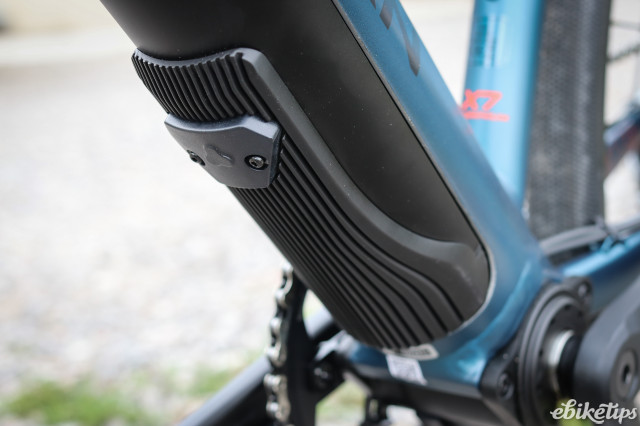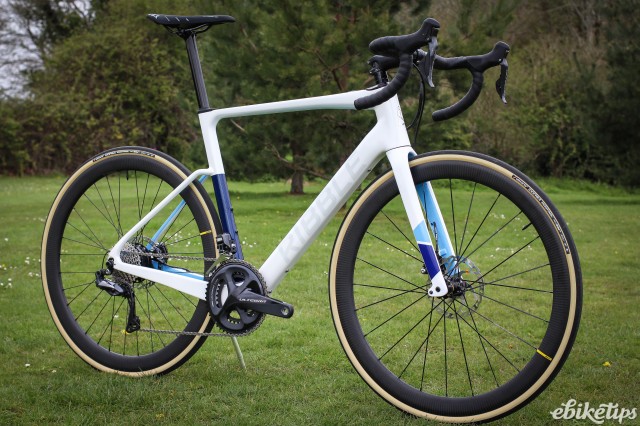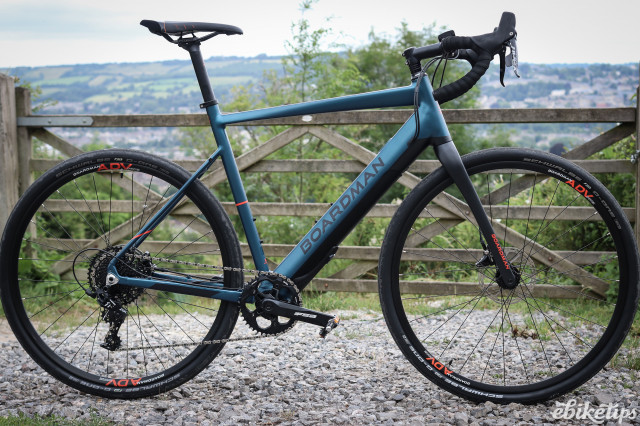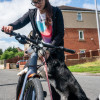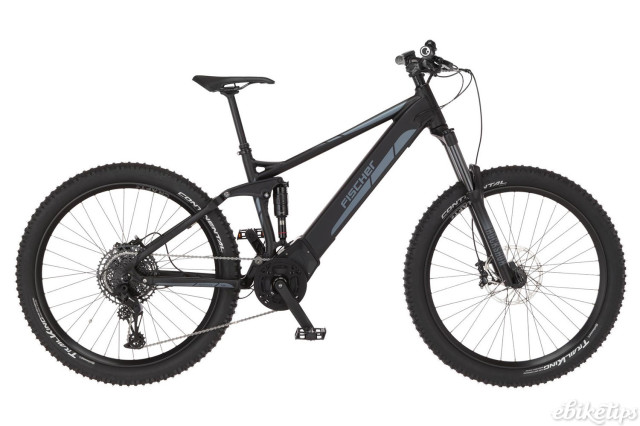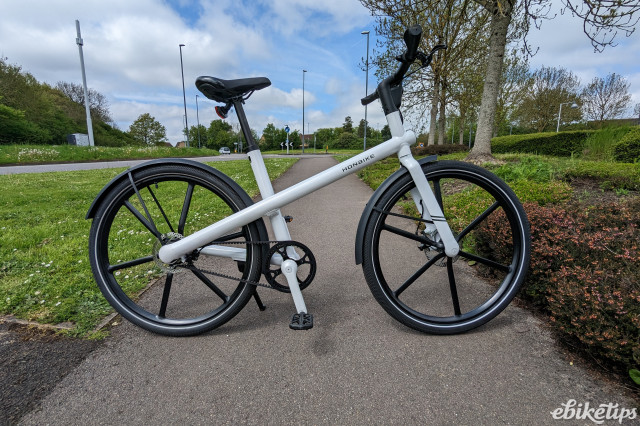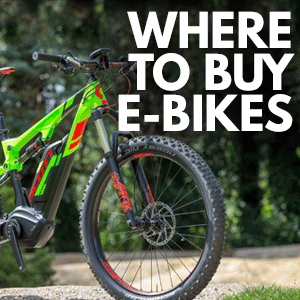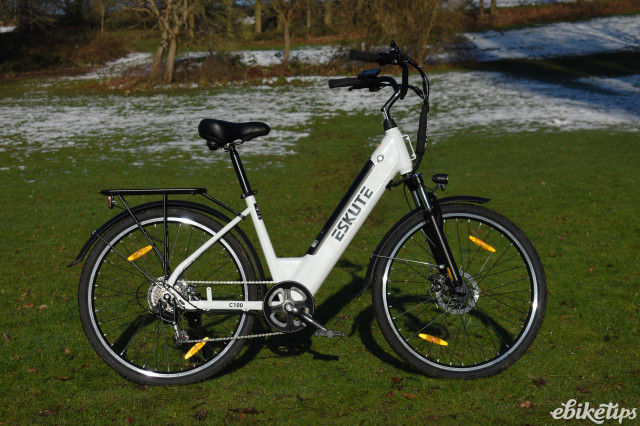Electric road bikes are a pretty interesting subcategory. They're restricted to 15.5mph assistance limits, just like other electrically assisted pedal cycles (EAPCs). While that can remove some of the attraction for those who had visions of flying along flat lanes assisted by their bikes, they are incredibly accessible - particularly for those coming back from injury or perhaps unable to ride as far as they used to.
- What is different about an electric road bike?
- Who should consider an electric road bike?
- What are the most common motors on e-road bikes?
- Recommended e-road bikes
There are arguments for raising the assistance limit to 20mph in the UK, which supporters say would allow riders to filter better with traffic as well as providing more of a benefit to those wanting to ride an e-road bike. However, the counter-argument is that such a move might chip away at the case to remain in the same legal bracket as unassisted bikes, with no requirement for licensing, insurance and suchlike.
Either way, as with most micromobility topics, it's not high on the government's agenda to discuss.
What is different about an electric road bike?
An electric road bike works the same as any other e-bike in the UK and is guided by the same legislation - which you can learn more about in our guide to e-bikes and UK law.
In short, to be classed as an electrically assisted pedal cycle (EAPC), there are a few requirements the bike needs to meet. These include a 15.5mph limit on the assistance, a 250 maximum continuous wattage from the motor, and that the motor is engaged using pedal assistance rather than via a throttle.
Electric road bikes generally look like their analogue counterparts, but with a little bit of chunkiness in the frame to accommodate the battery and/or motor. As with other types of e-bikes, you will see both hub and mid-motors. There are benefits to both, but generally the more expensive the e-road bike, the greater the likelihood that it will use a mid-drive.
> Hub motor v mid motor? What's the difference?
The biggest difference in an e-road bike compared to other types of e-bike is the obvious one - they are designed as road bikes. That means drop bars, skinny(ish) tyres, and road bike geometry. Other than that, they may come with slightly lower capacity batteries just to keep the overall weight of the bike down, as this is key in attracting people to riding an e-road bike.
Who should consider an electric road bike?
Electric road bikes are great levelling tools. Say you ride with a club, but you're starting to lag behind your club mates - perhaps through age or maybe you just don't have as much time to train any more.
An e-road bike will help you keep up on the climbs (assuming you're not riding with WorldTour class riders), and help you conserve energy so you can ride further. They're ideal tools for those returning from injuries or illness, too. Say you need to keep your heart rate down, but still want the benefits of exercising. An electric road bike - or any e-bike for that matter - can help you to achieve that.
There are of course some caveats. As mentioned at the outset, they are still limited to 15.5mph maximum assistance and so don't perhaps offer as much benefit on the flats as they do on the hills. That doesn't however make them redundant as hills do of course tend to demand the hardest efforts. Many of us will be happy to push on past 15.5mph purely under our own steam (without too much resistance from the motor) when terrain permits, reserving motor assistance for the inclines.
Cost may be a barrier for some. Electric road bikes aren't as popular as, say, eMTBs (in the UK at least), so it's not currently a huge market. The cost of a good e-road bike can consequently look quite high compared to other types of e-bike.
What are the most common motors on e-road bikes?
You're unlikely to find a 'full-fat' mid-drive motor like the Bosch Performance Line CX on an electric road bike for the simple reason that they're too bulky to retain the road bike aesthetic and keep the weight down - particularly when combined with the large capacity batteries that generally come with this type of system.
By far the most popular motors are Mahle hub motors (either the X35 or X20) and Fazua's mid-drive options (Ride 50 and Evation).
Mahle's offer up to 40Nm of torque for the X35 and up to 55Nm for the X20. These motors sit in the rear wheel, and offer smooth and relatively quiet assistance. They're paired with hidden downtube batteries - usually around 250Wh with the option to run a range extender. You'll see the Mahle motors on bikes like the Ribble CGR AL e, or the BMC Roadmachine AMP ONE.
The benefit of a hub motor is that they are generally lighter and quieter than a mid-drive. Conversely, when you're moving slowly, for example on a steep hill, the motor won't be working as efficiently as it can, and so they may suffer with power output beyond a certain gradient. Mid-motors also reach a point of dimishing returns, but in general they can tackle steeper stuff with a bit more ease.
When it comes to mid-drive systems, there's a few more to choose from. As mentioned, Fazua offer the Ride 50 and Evation systems, which you can find on bikes like the ADV 8.9E from Boardman. The Ride 50 offers up to 50Nm of torque, and the Evation up to 60Nm.
Beyond these, one of the lightest and most compact mid-drives on the market, the TQ-HPR50, can be found on the Pinarello Nytro e-road bike. It weighs just 1.85kg and offers up to 50Nm of torque and 300W of peak power.
Specialized also brings its own motor to the table, with the Turbo Creo 2 powered by the SL 1.2. Again, this is a mid-drive system and only available on Specialized bikes. It offers up to 50Nm of torque and 320W of peak power.
You might be wondering where the Bosch SX lightweight mid-motor is in this guide. It's not really been taken up by e-road manufacturers just yet, but if you're desperate to get hold of an e-bike with it in, you could have a look at some of the e-gravel options that are making use of it.
Lightweight mid-motor shootout: Bosch SX v Fazua Ride 60 v Specialized SL 1.2 v TQ HPR-50
Recommended e-road bikes
- Best hub motor e-road bike - Ribble Endurance SL e | Buy for £2,899 from Ribble
- Best e-road bike for big budgets - Specialized S-Works Turbo Creo 2 | Buy for £12,000 from Specialized
- Best adventure e-road bike - Boardman ADV 8.9E | Buy for £2,099.25 from Halfords
- Best of the rest
- How we review e-bikes
Best hub motor e-road bike: Ribble Endurance SL e - £2,899
Winner of our e-road bike of the year 2019/2020 award, the Ribble Endurance SLe is still right up there when it comes to e-road bikes. Although the price has risen slightly since we reviewed it and the Pro is no longer available, it’s still good value for a Shimano 12-speed Di2 105 groupset and carbon frame, let alone with the motor and battery components added in.
The Endurance SLe uses the popular hub drive MAHLE Smartbike Systems X35+ motor with a 250Wh battery. If you’re after a very neat e-bike that looks the part, the Ribble Endurance SLe range is certainly worth a look.
For more detail, read our review of the Ribble Endurance SLe Di2.
Best e-road bike for big budgets: Specialized S-Works Turbo Creo 2 - £12,000
Famously the most expensive bike ever reviewed on our sister site road.cc at the time of publication in 2020, the S-Works Turbo Creo SL e-bike had a lot to live up to. At £12,000 for the 2022 top spec SRAM AXS eTAP version (we reviewed the Dura Ace Di2 version), it’s definitely an e-bike for those with deep pockets.
It's had an upgrade though and it's getting more difficult to find the original Creo SL. Instead, Specialized is pushing the Turbo Creo 2. The Creo 2 offers more of an adventure road/gravel feel, so it's slightly more versatile as a machine.
It still uses Specialized's own SL motor, this time the SL 1.2, which is still incredibly compact. It's also upgraded with Future Shock 3.0 front suspension for a bit of relief from potholes and road buzz. You do get a lot for the money, but whether it’s good value will be a matter of opinion.
For more detail, read the road.cc review of the Specialized S-Works Turbo Creo SL e-bike.
Best adventure e-road bike: Boardman ADV 8.9E - £2,799
For a little under £3,000 you get a mid-drive Fazua motor, SRAM Apex gears, and 38mm Schwalbe G-One Speed tyres. The Fazua motor alone makes this worth the price (or more), and the overall package provides, "a bike that’s solid and enjoyable to ride,” according to our 2019 review.
The spec is still very similar to then, and with wide tyre clearances, you can easily turn this into a gravel e-bike at very little expense. The versatility and comfort are what makes the Boardman ADV8.9E special. The fact you’re getting a mid-drive motor and a decent sized battery for less than half some other e-road bikes makes this more than worth a look.
For more detail, read our review of the Boardman ADV8.9E.
Best of the rest
Bianchi E-Impulso - £3,149
Bianchi has slimmed down its e-road bike and made use of the Mahle X35 rear hub motor in the latest E-Impulso. It comes in the Italian brand's classic colour: celeste, which will make the purists happy, no doubt.
This model comes with a Shimano Ultegra groupset and Velomann wheels. It's a pretty decent price for a mid-range e-road bike that looks the part. And, it's versatile, too. You can stick tyres up to 40mm on here, as well as mudguards and there are mounting points for racks too.
For more detail, read our review of the older model, the Bianchi Impulso e-road.
Pinarello Nytro - £7,000
Taking inspiration from its Grand Tour winning road bikes, the Pinarello Nytro offers a combination of Italian class, and clever engineering from the TQ motor. The HPR50 offers 50Nm of torque and is one of the most compact mid-drives on the market.
This is the new version of the Nytro, as the older version used a Fazua system, which while still good, isn't quite as compact as the TQ option. The Nytro's still quite expensive - certainly among the top-end prices for an e-road bike - but if you're after a relatively lightweight e-road bike and just want a bit of gentle assistance, then the Nytro may be worth considering.
For more detail, read our review of the older Pinarello Nytro.
Wilier Cento 1 Hybrid - £4,320
The Wilier Cento 1 Hybrid may have had a face lift since we reviewed it, but it's a similar story under the paint. It uses the Mahle X35 hub drive system and has a claimed weight of 11.9kg in newer forms. The previous model weighed 12.5kg all-in, so this is quite a reduction, if true.
The 250Wh battery is tucked neatly in the downtube - and you'd be hard pressed to tell that it's an e-bike. It's not an aggressive frame geometry, with the focus being on comfort over aerodynamics, but that's not to say it's not a fast bike.
For more detail, read our review of the Wilier Cento 1 Hybrid.




